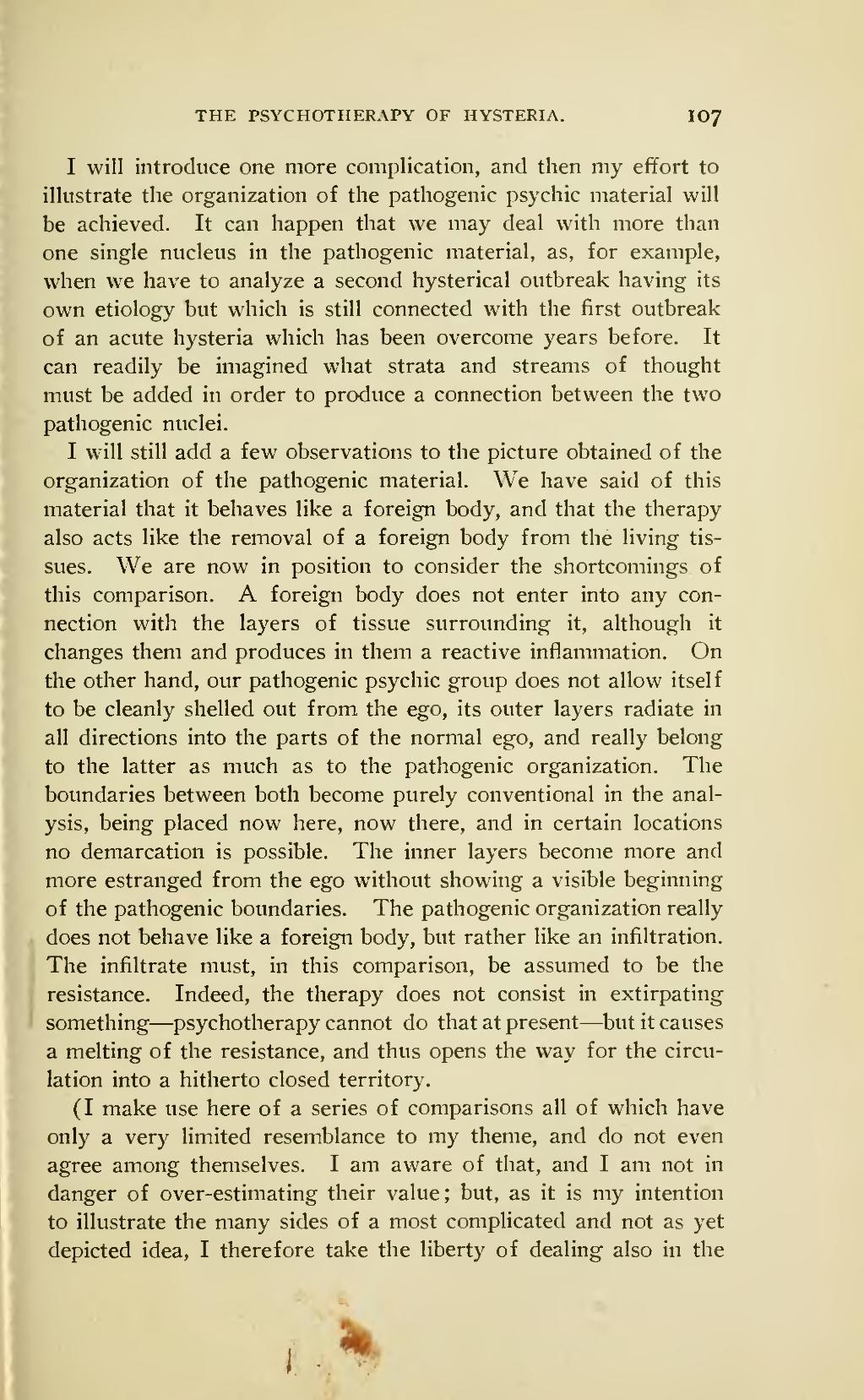I will introduce one more complication, and then my effort to illustrate the organization of the pathogenic psychic material will be achieved. It can happen that we may deal with more than one single nucleus in the pathogenic material, as, for example, when we have to analyze a second hysterical outbreak having its own etiology but which is still connected with the first outbreak of an acute hysteria which has been overcome years before. It can readily be imagined what strata and streams of thought must be added in order to produce a connection between the two pathogenic nuclei.
I will still add a few observations to the picture obtained of the organization of the pathogenic material. We have said of this material that it behaves like a foreign body, and that the therapy also acts like the removal of a foreign body from the living tissues. We are now in position to consider the shortcomings of this comparison. A foreign body does not enter into any connection with the layers of tissue surrounding it, although it changes them and produces in them a reactive inflammation. On the other hand, our pathogenic psychic group does not allow itself to be cleanly shelled out from the ego, its outer layers radiate in all directions into the parts of the normal ego, and really belong to the latter as much as to the pathogenic organization. The boundaries between both become purely conventional in the analysis, being placed now here, now there, and in certain locations no demarcation is possible. The inner layers become more and more estranged from the ego without showing a visible beginning of the pathogenic boundaries. The pathogenic organization really does not behave like a foreign body, but rather like an infiltration. The infiltrate must, in this comparison, be assumed to be the resistance. Indeed, the therapy does not consist in extirpating something—psychotherapy cannot do that at present—but it causes a melting of the resistance, and thus opens the way for the circulation into a hitherto closed territory.
(I make use here of a series of comparisons all of which have only a very limited resemblance to my theme, and do not even agree among themselves. I am aware of that, and I am not in danger of over-estimating their value; but, as it is my intention to illustrate the many sides of a most complicated and not as yet depicted idea, I therefore take the liberty of dealing also in the
